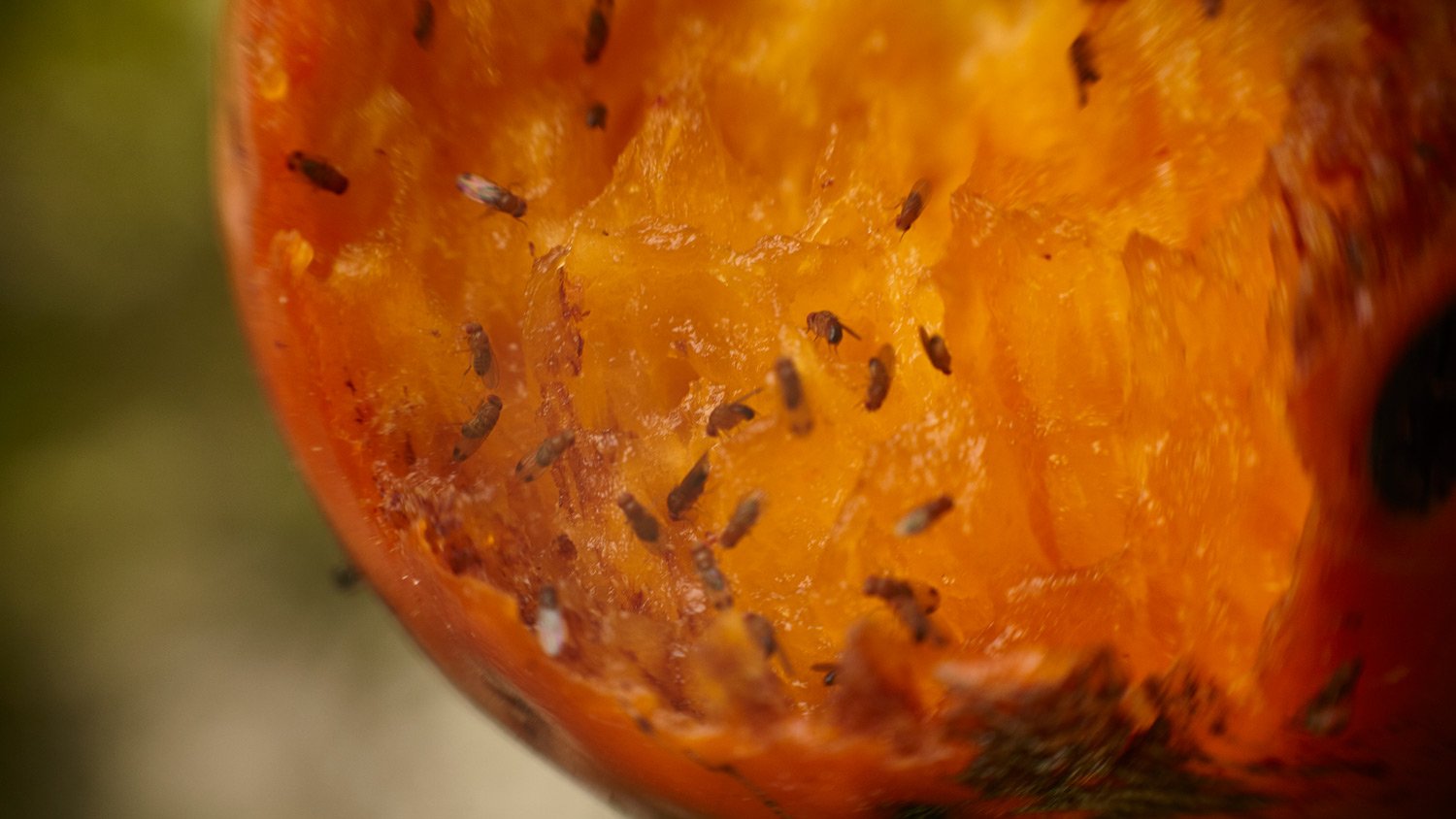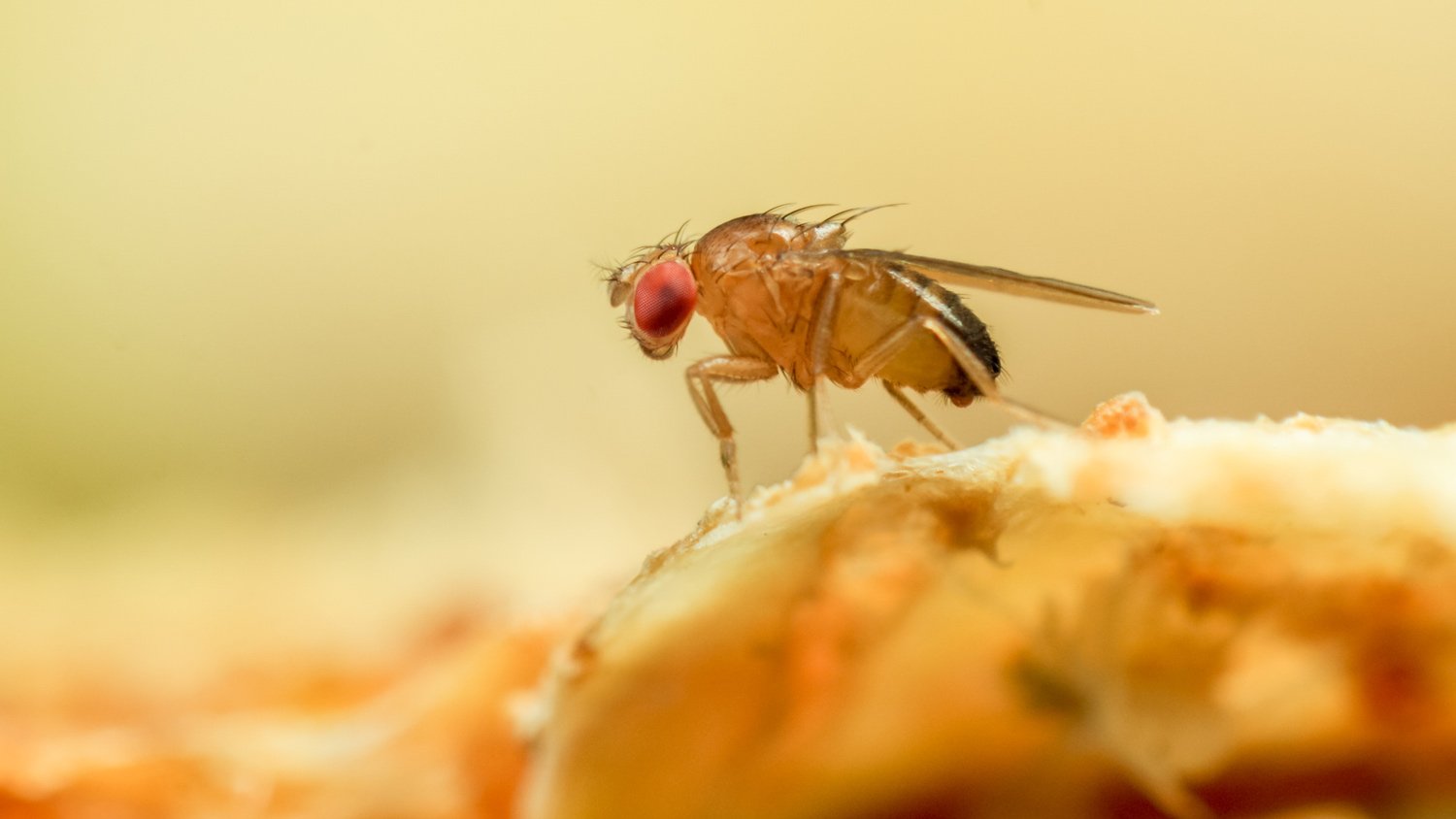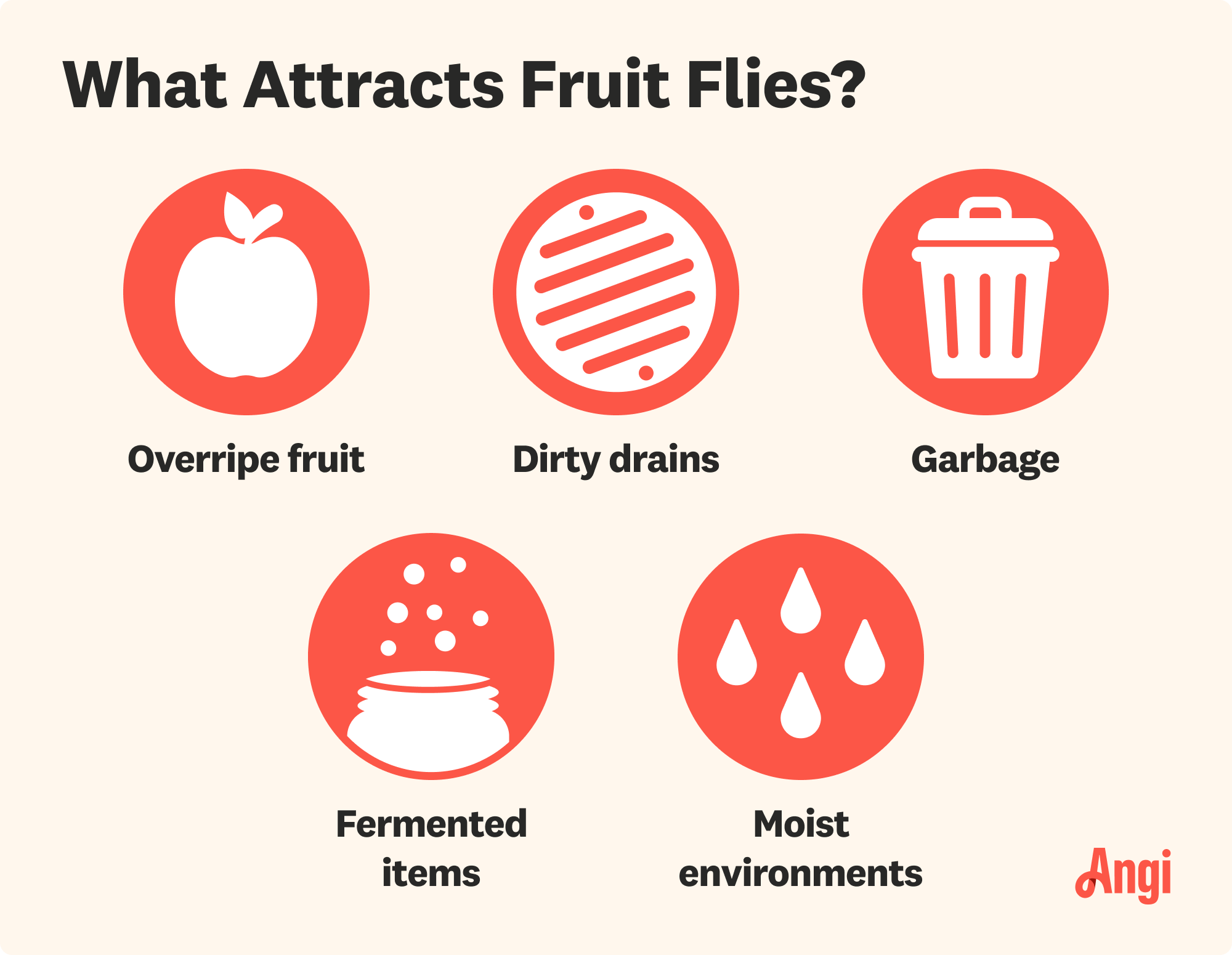
Whether you have bugs, bats, or rodents invading your home, you’ll want to contact an exterminator quickly. Find out how much pest control costs in Columbus, OH.
Learn to differentiate these minuscule menaces


Fungus gnats have slender bodies and long, dangling legs, while fruit flies are round with red eyes.
Fungus gnat larvae feed on plant roots and fungi, while fruit flies feed on decaying fruits and fermenting materials.
Fruit flies are controlled by removing food sources and using vinegar traps, while fungus gnats require soil drying and targeted treatments for larvae.
Gnats and fruit flies may be tiny, but they can be incredibly irritating. At first glance, you might not know which of these annoying insects you’re dealing with, but there are clear distinctions that differentiate them. Knowing how to identify each can help you find the most effective way to eliminate them as quickly as possible. Let’s cover the key differences between fungus gnats vs. fruit flies.
When taking on this project, expect questions only a pro can answer. With our network of local pros, you'll get the job done and your questions answered—without the hassle and stress of doing it yourself.

Gnats and fruit flies differ in their appearance, habitat, and feeding preferences. Gnats are slender, dark insects found in moist soil or plants or feeding on fungi, while fruit flies are slightly larger and rounder, yellowish-brown, and attracted to overripe or decaying fruit, as well as a variety of sugary substances.
| Type of Difference | Gnats | Fruit Flies |
|---|---|---|
| Size | 1.5–3 mm | 3–4 mm |
| Color | Dark gray/black | Tan/black |
| Host Preference | Plants/soil | Decaying fruit/sugar |
| Habitat | Outdoors/Indoors | Indoors |
| Disease | Do not carry disease | Do not carry disease |

Gnats and fruit flies may appear similar, but these tiny winged insects differ in size, color, and body shape. Here are the key characteristics that define them.
Gnats are smaller than fruit flies, ranging from 1½ to 3 mm, and they have a more slender body shape. Fruit flies are roughly 3 to 4 mm in size and more rounded.
Gnats are typically dark gray or black, whereas fruit flies tend to be tan or black with distinct red eyes.
Gnats have a thin frame with long, dangling legs and antennae. Fruit flies have a more compact, rounded body. Also, fungus gnats have long, narrow wings that can often appear too large for their bodies, whereas fruit flies have short, rounded wings.

Another way to easily identify the difference between fungus gnats and fruit flies is by observing their feeding preferences and where they are congregating. These are the main things to look for.
Gnats are attracted to chronically moist environments like overwatered plants, soil, or rotting organic material. They lay their eggs in damp areas and feed on fungi, hence their name. Fruit flies, on the other hand, are attracted to sugary substances, especially decaying fruit and vegetables. They feed and breed on overripe produce or food scraps left out in kitchens, and they can even hitchhike into the home via eggs laid in produce.
Do fruit flies bite? What about fungus gnats? Luckily, the answer is no to both. While these two insects can be irritating when they invade your space, you won’t have to worry about them biting.
Fungus gnats are commonly found outdoors near plants or damp soil but can also invade homes, especially around overwatered plants. Fruit flies thrive indoors, particularly in kitchens and areas where overripe fruit or vegetables are stored. If you notice swarms of small flies away from the kitchen (or anywhere human food is stored), it’s likely gnats, as they are drawn to a broader range of food sources like mold, damp soil, and houseplants.
The average lifespan of a fruit fly is around 40 to 50 days, with their life cycle consisting of four stages: egg, larva, pupa, and adult. They reproduce rapidly, with females laying up to 500 eggs in a single cycle. They transition from egg to adult in just eight days, making infestations difficult to control.
Fungus gnats have a much shorter lifespan, averaging only 14 days. Gnats lay eggs in moist soil or organic matter, and their lifecycle is completed within about four weeks.
Though fruit flies don’t bite, they can carry bacteria like salmonella, E. coli, and listeria, which can cause food poisoning. They contaminate surfaces and food, potentially leading to serious illness if it’s consumed. Fungus gnats, on the other hand, primarily harm plants. Their larvae spread fungus spores to plant roots, causing diseases such as black root rot, Pythium blight, and Fusarium wilt. While not a direct threat to human health, they can severely damage plants.
Getting rid of fruit flies involves removing their food sources, such as overripe fruit, sugary spills, or fermenting materials. Using traps made with apple cider vinegar and dish soap can lure and kill fruit flies quickly—the vinegar baits them in, while the soap breaks the surface tension and causes them to drown. Keeping food prep areas clean and sealing food items effectively will prevent further infestations.
For fungus gnats, treatment revolves around managing soil moisture, since they breed in damp environments. Allowing the soil to dry out between waterings disrupts their life cycle. Yellow sticky traps can catch adult gnats, while treating the soil with beneficial nematodes or hydrogen peroxide solutions can target larvae and prevent damage to plants.
In either case, if you’re having trouble with these pesky gnats or flies, a local bug exterminator can help you get rid of them for good with professional-grade treatments.
As fungus gnats and fruit flies have different food sources, there are different ways to help prevent future infestations.
The main way to prevent fungus gnats is to keep your home clear of things that attract gnats, such as decaying plant matter and waterlogged soil. Here’s what to keep in mind:
Avoid overwatering houseplants
Keep soil dry and well-drained
Seal cracks around windows
Fruit flies love sugary substances and overripe and decaying fruit, so it’s important to avoid leaving these around your home. Here’s what to do:
Dispose of overripe fruit promptly
Keep kitchen surfaces clean and dry
Store fruits and vegetables in the refrigerator
Inspect produce before bringing it into your home
From average costs to expert advice, get all the answers you need to get your job done.

Whether you have bugs, bats, or rodents invading your home, you’ll want to contact an exterminator quickly. Find out how much pest control costs in Columbus, OH.

When calculating the cost of hiring a flea exterminator, consider your home size and the infestation extent. This guide will help you figure out what to budget.

Snake removal cost comes down to the type and number of snakes you’re dealing with and where they’re located inside your home. This guide breaks it down.

Roaches in your cabinets can make your life hard, and they’re difficult to eliminate. Read on to learn how to get rid of cockroaches in your kitchen cabinets.

Nobody wants to tangle with wasps on their property, as these insects sting with extreme prejudice. Here’s how to get rid of wasps safely and for good.

Cockroaches are annoying, but German cockroaches are on another level. Here’s how to get rid of German cockroaches and when to call in an exterminator.